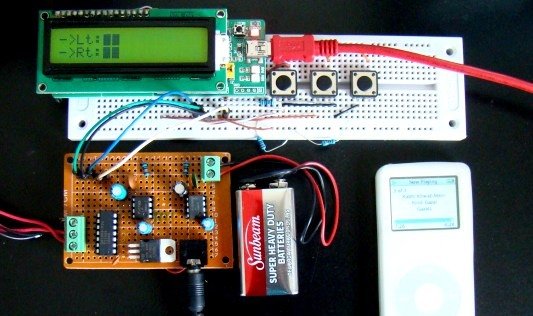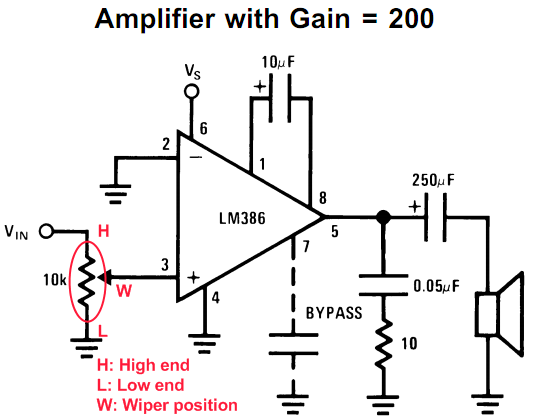Due to its simplicity (requires minimum external components) and high availability, LM386 is very popular among hobbyists for use in low-voltage audio amplification applications. Most of the time a potentiometer is used at the input side of LM386 to provide a volume control in the output speaker. The potentiometer does not control the gain of the amplifier itself, but it creates a voltage divider network at the input, which in fact controls the fraction of the audio signal that is fed to the amplifier. This project is about a stereo audio amplifier using two LM386 ICs with digital volume control for both left and right speakers. So, how would you control the volume digitally? You are right, by replacing the traditional electro-mechanical form of potentiometers with digital potentiometer chips. This project uses MAXIM’s DS1868 dual digital potentiometer chip and a PIC microcontroller to control the volume of a stereo output from two LM386 ICs.

Theory
Tons of resources can be found on the internet about LM386 and so I am not going to describe it in detail here. The LM386 IC has got 8 pins which require very few external components to work as a mono amplifier. The circuit below is taken from the datasheet and shows the external components required for constructing a mono-channel audio amplifier with LM386. An external 10K potentiometer at the input is used to control the volume of the output speaker. For a stereo audio amplifier, we need two of this circuit.

The supply voltage range for LM386 is wide (4-18 V). It can be powered with a +9V PP3 battery. For digital volume control feature, we will replace the external 10K potentiometer at the input stage with a digital potentiometer chip. MAXIM’s DS1868 is a dual digital potentiometer chip. Each wiper terminal has 256 positions between the high and low end of the potentiometer. The wiper position is set by an 8-bit control value that is stored into the I/O register of DS1868. The communication with the host microcontroller is done through a 3-wire serial interface. Please read my previous post, ‘How to interface MAXIM’s DS1868 digital potentiometer with a PIC microcontroller‘ for further detail on DS1868.
For more detail: LM386 based stereo audio amplifier with digital volume control
